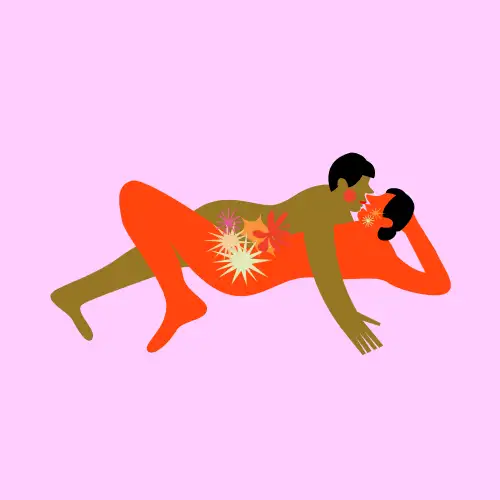
Emergency PEP (Post-Exposure Prophylaxis) Prescription


PEP is an emergency treatment to prevent HIV after exposure.
Get fast access to a professional PEP assessment, without an appointment, thanks to our expert service available 7 days a week in Montreal.

How does PEP work?
PEP (post-exposure prophylaxis) involves taking antiretroviral drugs for 28 days to prevent HIV from establishing itself in the body after potential exposure. The sooner it is started — ideally within 24 hours, and at most within 72 hours — the more effective it is.
This treatment is prescribed after a clinical evaluation, depending on the type of exposure and when it occurred.
A Risk Exposure to HIV? Next steps.
If you think you have been exposed to HIV, the most important thing to know is that the effectiveness of PEP (Post-Exposure Prophylaxis) depends on speed. Treatment must be started as soon as possible, within a maximum of 72 hours. Every hour counts.
In an emergency situation where it is often difficult to get a medical appointment within a few hours, contact your pharmacy.
If you are in Montreal and want to be supported by our team to start quickly, call us or come directly. One of our pharmacists will see you for a confidential consultation to assess the situation.
If PEP is indicated for you, we can initiate treatment immediately on site. We will give you the first few days of medication to start without wasting a moment. Subsequently, we will coordinate with a specialized clinic or your doctor for the rest of the 28-day treatment and the required medical follow-up.
You are not alone in this process. You will find caring, confidential, and non-judgmental support at our pharmacy at all times.
PEP is for any HIV-negative person who has experienced a high-risk situation for HIV exposure within the last 72 hours.
If you think you are in this situation, the first thing to do is to consult a healthcare professional without any delay. A professional assessment is always necessary to determine if PEP is the right solution for you.
What types of risks can justify PEP?
The assessment will focus on exposures that present a significant risk of HIV transmission. The most common examples include:
- Sexual exposures: Anal or vaginal intercourse without a condom, a condom breaking, or sexual assault.
- Blood-related exposures: Sharing injection material or an accidental injury with a potentially contaminated object.
Risk assessment: an essential step
Before prescribing PEP, the healthcare professional must evaluate the actual level of risk. This confidential discussion takes into account factors like the type of exposure, the status of the source partner (if known, and if their viral load is undetectable, U=U), and your own HIV status, confirmed by a rapid test.
In which cases is PEP generally not indicated?
- If you are already on PrEP with good adherence.
- If the exposure occurred more than 72 hours ago.
- If the risk is judged to be very low or nil after assessment (e.g., oral sex).
- If you are already living with HIV (a full treatment regimen is needed then, not PEP).
The key message is: when in doubt, consult immediately. It is better to have a consultation for nothing than to leave a risk unmanaged.
This is an excellent question because even though the acronyms are similar, their roles are complete opposites.
The best way to see the difference is to compare the regular birth control pill to the morning-after pill.
PrEP: your planned, preventive protection
Think of PrEP as the "birth control pill" for HIV.
- Its role: It is a proactive protection that you take continuously before a potential exposure to HIV.
- How it's taken: On a regular basis (a daily pill or an injection every two months).
- Who it's for: For HIV-negative people who want continuous protection against HIV.
PEP (or PPE): your emergency solution after a risk
Think of PEP as the "morning-after pill" for HIV.
- Its role: It is an emergency treatment that is taken after a high-risk situation.
- How it's taken: It is a full 28-day course of treatment that must be started within a maximum of 72 hours after the risk.
- Who it's for: For HIV-negative people who have experienced a potential exposure and were not on PrEP.
In summary:
- PrEP = PRE-exposure. It is a continuous preventive strategy.
- PEP = POST-exposure. It is a one-time emergency treatment.
Yes, PEP is an effective strategy for preventing HIV after different types of high-risk exposure, whether sexual or blood-related.
However, the fact that PEP works does not mean it is necessary or recommended after every situation. A professional assessment is always crucial to determine if the risk of transmission justifies the treatment.
The main types of exposure where PEP is an effective option
- Sexual exposures: Highly effective after anal or vaginal intercourse without a condom, or in case of a condom accident (breaking, slipping).
- Sharing of injection equipment: A key intervention in cases of sharing syringes or needles.
- Occupational exposures: Used by healthcare personnel in case of a needlestick injury or blood contact.
Why is risk assessment so important?
Even for a risky exposure, a discussion with a healthcare professional is essential because:
- The level of risk varies: Receptive anal sex carries a much higher risk than other types of contact.
- The status of the source partner is key: If your partner is living with HIV but has an undetectable viral load (U=U, Undetectable = Untransmittable), the risk is zero and PEP is not necessary.
- Some contacts pose no risk: HIV is not transmitted through saliva or skin contact without an open wound. PEP is not indicated in these cases.
In short, PEP is a powerful tool, but its prescription always depends on a rigorous assessment of the actual risk. When in doubt, always consult.
When used correctly, PEP is an extremely effective emergency intervention to prevent HIV infection.
Its success relies mainly on two golden rules: speed and rigor.
Rule #1: Speed - Act as quickly as possible
This is the most critical factor. PEP must be started as soon as possible after the risk, and no later than 72 hours after. Do not wait. The faster you act, the greater the chances of success.
Rule #2: Rigor - Follow the 28-day treatment
PEP is not a single dose. It is a complete course of antiretroviral treatment that you must take every day, for 28 days without interruption. Missing doses seriously compromises the treatment's effectiveness.
The effectiveness of today's treatments
You may have heard the effectiveness figure of "over 80%." This statistic dates back to the 1990s and is based on a single medication (AZT), which was much less potent than current options.
Today, PEP uses combinations of modern medications. The medical consensus is clear: the effectiveness of modern PEP is much higher and approaches 99% when the treatment is started quickly and taken rigorously. Cases of failure are exceptionally rare.



















